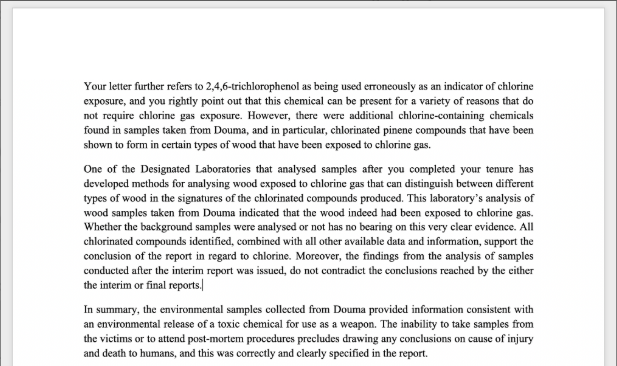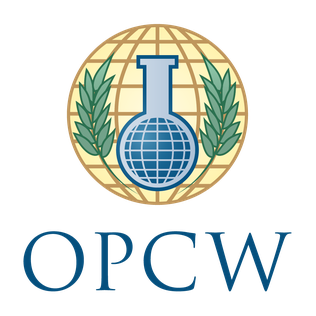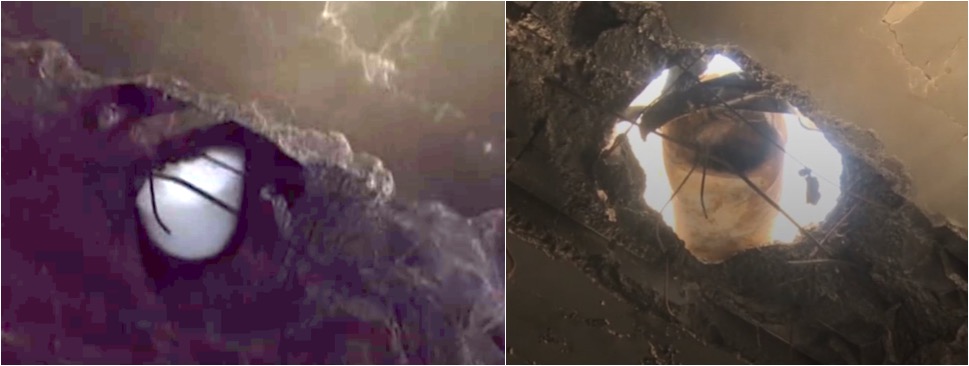Evidence from the August 16, 2016 Chemical Attack on Marea by ISIS
On August 16th 2016 reports of an ISIS chemical attack emerged from the town of Marea, north of Aleppo. This is not the first time Marea has been targeted by ISIS chemical attacks, with earlier attacks including the use of a chemical agent believed to be mustard gas and chlorine.
Syrian journalist Yasser Alhaji provided Bellingcat with footage of interviews with locals who gave details of the attacks.
Translation – “On August 16th 2016 Marea has been targeted by missiles. The White Helmets team went there directly and noticed an ugly smell. The smell is similar to one that we noticed last year when it appears that there was a liquid chemical. Chemical liquid also appears in the attack which happened today. We knew that it’s chemical from the smell and the breathing difficulties which civilians suffered as well as redness in the eye. Also redness in the skin.
We rescued more than 7 civilians, and one of our members had a badly breathing difficulties. We moved them to the hospital to be treated. The cloth of civilians were taken off in the hospital and they were washed in water and soap.
The source of the missiles is ISIS. The same month last year we documented 73 missile that targeted Marea also by ISIS. Maybe they targeted in this month because it’s the month where ghouta was attacked with chemical weapons.”
Translation – “On 16/08/2016 at 4:00 O’clock afternoon. ISIS targeted Marea with few missiles, there about 7 missiles. The affected cases came to the hospital after the missiles attack.
They were all having breathing difficulties, nausea, and vomiting. They were 10 people came in a period of one hour, all of them civilians including a child who is 1 month old. Also one of the rescuer from the White Helmets team was badly affected, he was trying to move the remnants of the bombs.
Symptoms includes: Breathing difficulties, running noses, and lack of coordination. .
The hospital team made the possible procedures to give first aid to the affected people such as Hidro cortizon and oxygyne and larfine.
We treated everyone in the hospital and didn’t send anyone to other hospitals”.
Translation – “We were sitting in Nema district in the shop which is in the market place. We felt the sound of missiles that hit Marea city. We went towards the attacked location. The missile targeted a house where no one was there. People near started to vomit. There was an ugly smell. People started to get dizzy. No casualties, it’s light injury only. The missiles came from ISIS area in Snubul. From 4 O’clock, they shell everyday about 4 or 5 missiles around the same time.“
Translation – “It directly cause suffocation for civilians – One of our team members had been injured and affected by the gas and he was suffocated. We took him to the hospital to be treated and to be given oxygen. Few civilians have been washed to be cleaned from chemical remnant. We implemented our procedure of how we deal with chemical attacks so we know how to deal with this.
The missiles were not targeting a specific area (random shelling). The purpose was to target a big number of civilians. We took 7 affected people to the hospital, we documented all details about them. We also documented details about members of the white helmet team who was affected. There were no casualties.“
Below is the location of Snubul on a map that was taken from Qasioun news website.
- In black: ISIS controlled area
- In green: Free Syrian Army controlled area
Based on the above interview, open source information, and contact with locals it was possible to establish the following information about the attack.
Location
Locals confirmed to Bellingcat the location of the attack was central Marea, at the site of the main post office in the town. Syrian journalist Yasser AlHaji provided footage filmed by a cameraman sent to the town that includes short clips of two impact sites
Based on the above footage it was not possible to geolocate the location when the footage was filmed. However, other footage filmed by the cameraman in Marea shows a view of the town that pans towards the direction of the post office
This video was geolocated, and at the beginning of the video the camera is facing directly north, and pans to point directly to the post office, northwest of the camera position.
Munitions
Multiple videos and photographs were posted online showing the munitions used in the attack, and additional videos footage was provided by Yasser Alhaji from the cameraman sent to Marea.
The munition used appears to be a mortar bomb, and images of the munition clearly shows that it is hollow, supporting the claim it carried a non-explosive payload. This munition matches no known chemical munitions, and is almost certainly manufactured by the group who used them (allegedly ISIS).
The payload of the munition is somewhat more mysterious. The symptoms described are too vague to state which chemical agent it was filled with. However, in one of the interviews with locals the payload is described as having a smell that “is similar to one that we noticed last year when it appears that there was a liquid chemical.” The attack that occurred in August last year was believed to be mustard gas, and photographs from that attack show artillery shells that were used in the attack and a thick black substance splattered nearby. It’s worth noting “mustard gas” is somewhat of a misnomer, as the actual agent more often comes in liquid form. Video from the recent attack shows a similar substance splattered on a wall near the impact site of one of the mortar bombs.
Victims
10 victims were treated for exposure to chemical agents, with symptoms including breathing difficulties, nausea, skin reddening, eye irritation, and vomiting. Photographs of some of the victims receiving treatment were shared via various channels
In addition to adult male victims, including one member of the White Helmets, a month old child was also reported as being treated. After initial treatment there were no reports of victims requiring further treatment.
Conclusion
Based on the details of the attack, in particular the design of the munitions, it appears this incident was an attempt to deliver some sort of agent in weaponised form by ISIS. What is unclear is exactly what agent that is, and while the presence of unidentified black sludge at the scene of this attack and the earlier mustard gas attack is interesting, there’s nothing to indicate this attack involved the use of mustard gas. Most notably is the absence of blistering seen in mustard gas attacks (more information on mustard gas can be found here).








